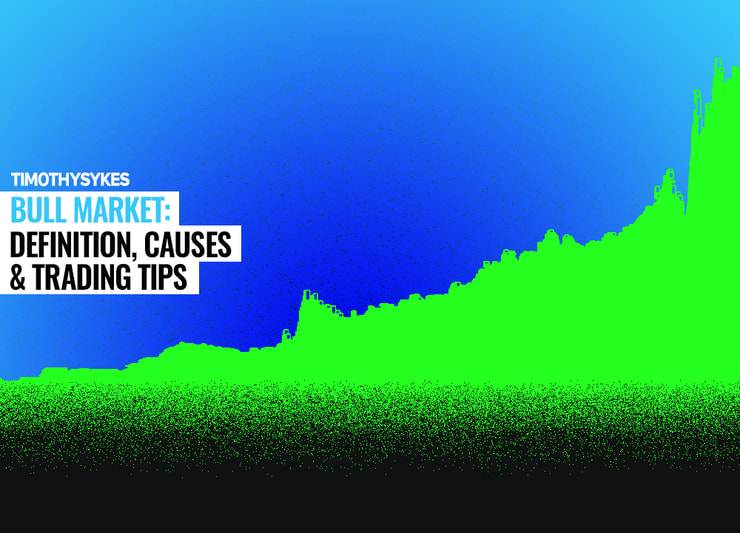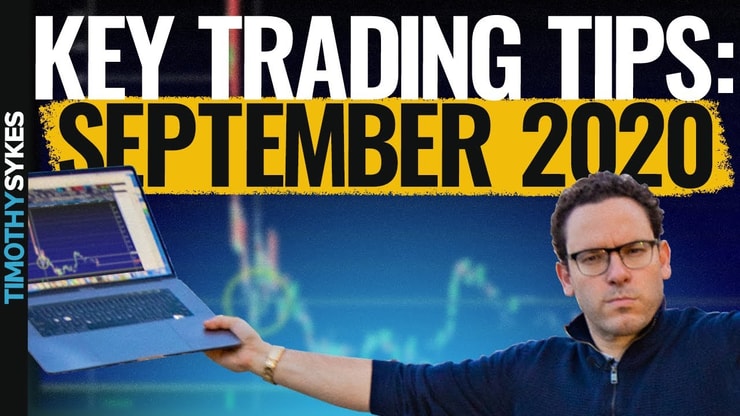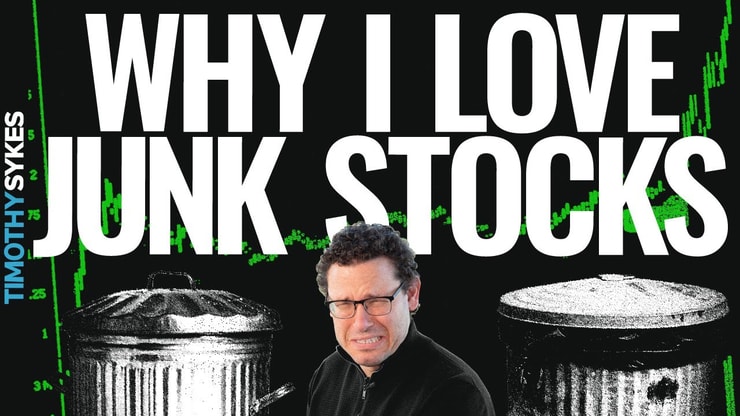Are we in a bull market? To know the answer to that question you have to know what a bull market is.
I’ll get into it more later, but for now … A bull market usually coincides with an economy that’s thriving.
But the market can be emotional … It goes through highs and lows, just like people. The good news is the lows are usually shorter-lived than the highs.
As a trader, you need to know how to recognize trends in the market and have the skills to use them to your advantage.
So, let’s get into what a bull market is, what causes a bull market, and some tips to trade in one.
Table of Contents
- 1 What’s a Bull Market?
- 2 What Causes a Bull Market?
- 3 How Do You Identify a Bull Market?
- 4 What’s the Difference Between a Bull Market and Bear Market?
- 5 What Are the 4 Phases of a Bull Market
- 6 Bull Market Real-Life Example
- 7 3 Tips on How to Trade in a Bull Market
- 8 3 Mistakes to Avoid While Trading in a Bull Market
- 9 Frequently Asked Questions About Bull Markets
- 10 Conclusion
What’s a Bull Market?
So what’s a bull market? A bull market is a market that’s rising or expected to rise. Investors consider the market to be a bull market when it’s increased by 20% from recent lows.
But overall market trends are based over a long time period. Short-term changes in the market are usually referred to as corrections. Markets don’t go straight up or straight down.
A Brief History of Bull Markets
There have been many bull markets throughout history. Some last longer than others, and they all have different percentage gains before retreating back into a bear market.
The bull market of the 1920s was known as one of the great bull markets. The market was running on speculation and people were treating it like gambling.
The markets went up quickly. At the end of the 1929, right before the crash, the market gained about 30% in a few months. Then, of course, the market crashed, which led to the Great Depression.
The most recent bull market from 2009–2020 was the longest in history. There was growth of around 330% in the S&P 500.
Like stocks going supernova, the markets can’t go up forever. Eventually, they come down. There’s a pattern of ups and downs in the overall market just like in the economy and small-cap stocks.
What Causes a Bull Market?
A bull market is caused by a high demand for stocks and a low supply of sellers. That causes prices to increase.
Investor mindset drives the markets up or down. If traders and investors have a positive outlook on the economy, that can push the market up. High employment rates and consumer confidence can also help create a bull market.
There can also be some traders’ emotions involved. Like FOMO. You can watch the market keep rising while waiting for a dip to get in … And it just never seems to come.
Eventually, emotions can get the best of traders and inventors, and they just get in. With enough volume, prices can rise even more from traders and investors chasing the market.
I never recommend traders chase stocks. It usually leads to poor trades and bad habits.
You need a trading plan and patience to wait for your ideal setup. If the opportunity doesn’t come, you need to be OK with missing it. There will always be another play.
If you want to know which stocks to watch in any market, signup for my FREE weekly watchlist. For alerts on stocks going supernova, sign up for my Supernova Alerts. It’s no cost! And it’s how you can learn the process of finding hot stocks.
I go over my supernova pattern in detail in my “Penny Stocking Framework Part Deux” DVD. Get your copy here.
How Do You Identify a Bull Market?
You can identify a bull market by a slow upward trend in the markets. There will be down days and maybe small downtrends over a few weeks … But then it will pick back up and continue to make new highs.
Most traders and investors in the market are long biased or “bullish.” Because over long periods of time, even after crashes and bear markets, the market goes up. If the economy’s good and there’s no reason for traders to get nervous, we’re probably in a bull market.
Honestly, I don’t care about the overall market so much. Bull market … bear market…
My approach to trading penny stocks allows me to profit in any market. I made my first million in a bull market. But I made my second and most of my third million in a bear market. And when the major markets were tanking this year, I made $39,060.70 in March alone. During 2020’s volatile market so far, I’ve made $746,148.70.*
(*Please note that these kinds of trading results are not typical. Most traders lose money. It takes years of dedication, hard work, and discipline to learn how to trade, and individual results will vary. Trading is inherently risky. Before making any trades, remember to do your due diligence and never risk more than you can afford to lose.)
What’s the Difference Between a Bull Market and Bear Market?
A bull market definition is an uptrending stock market, with high trader and investor confidence and a thriving economy. A bear market is the opposite.
A bear market is a downtrend in the market. Market pros consider it to be a bear market if there’s been a drop of at least 20% from a recent high.
In a bear market, traders and investors are nervous and may pull out of their investments to hold in cash until the trend reverses back to the upside. Bear markets are usually shorter than bull markets.
What Are the 4 Phases of a Bull Market
A bull market starts with a bear market that’s changing trends. A bear market starts to find a bottom after maximum panic selling and investors start to scoop up stocks for bargain prices.
There might be a double bottom or other chart pattern that might start the uptrend. Or there could be new positive economic data released.
For more about chart patterns like double bottoms and ascending triangles, get my “How to Make Millions” DVD. It’s my most comprehensive trading guide. And all proceeds from the sale go to charity.
Now, here are the four phases of a bull market…
Low Prices
A bull market begins at the end of a bear market. There’s negativity about the economy and skepticism about prices increasing.
More Breaking News
- Riot Platforms Inc. Stock: A Rollercoaster with Cryptocurrency’s Wild Swings
- Archer Aviation’s Unexpected Surge: What’s Fueling the Takeoff?
- Decoding the Unexpected Surge: Is Asset Entities Inc. the Next Big Thing?
Increased Buying
The next stage is when buyers start to come in. The low prices eventually lure in buyers. Companies may start to announce positive earnings. Optimism grows.
Return to Normal
In this phase, the market has reached its previous highs from before its decline into a bear market. This can act as resistance at first, and prices may head back down. But any dips will likely be bought up and the market will continue to make new highs.
Euphoria
In this stage, the market is at new highs. Trader and investor confidence is high. New IPOs hit the market. Traders take profits. But there may be negative news or maybe earnings reports don’t live up to expectations. The end of this stage is usually what leads to the beginning of a bear market.
And the cycle continues…
Bull Market Real-Life Example
The bull market from 2009 to 2020 was the longest bull market in history. It’s a good example of a long-term upward trend.
Following the 2008 recession, economists and investors were bullish on economic recovery and growth. The housing market recovered, employment rates were good, and consumer spending started up again.
Who knows how long it could’ve continued if it wasn’t for the coronavirus pandemic…
The biggest driving factor in this bull market was the tech industry. Maybe that’s why it lasted the longest … Technology is advancing quickly. Companies release new products and discoveries all the time.
People want to be the first ones in a promising company with new technology.
That’s exactly the kind of mentality that drives up penny stocks. A lot of new traders or investors think they’ll find the next Microsoft. They can get caught in penny stock promotions because they don’t know the rules of the game.
They may end up holding a loser because they believe the promoters and the hype. I personally lost $500,000 by believing in one of these companies. Learn from my mistake. You can read about my massive loss in my book, “An American Hedge Fund”. It’s also no cost.
Get an education before you trade. I started teaching so I could try to save people from losing money like I did.
If you learn the rules, you can take advantage of stock pumps. Don’t believe the lies and lose your hard-earned money.
If you want to learn how to protect your account, apply for my Trading Challenge. Take advantage of my knowledge from 20+ years in the market.
There’s no shame in having losses, too few people realize I lost $500k+ & all my industry credibility when I believed in a penny stock & learned the hard way. Now crypto/weed/covid stocks ALL have the same dump patterns, but most newbies still won’t learn…how do I change that?
— Timothy Sykes (@timothysykes) September 3, 2020
3 Tips on How to Trade in a Bull Market
Want some tips on how to trade in a bull market? Let’s go…
Go Long
No, I don’t mean like in football … Going long in trading means you’re buying low, hoping to sell your position at a higher price. It’s how the majority of traders and investors take positions.
But investors tend to hold their positions long term, maybe years and years.
That’s not how I trade. Because I trade junk companies that are penny stocks, I have to be more careful. And I teach my students how to trade scared too.
I never hold a penny stock long term. Overnight is the longest I’ll hold a position. And in this volatile market, I haven’t been holding overnight as much as I used to. You have to be able to adapt to market changes.
If you need help adapting to this volatile market, get my no-cost “Volatility Survival Guide.”
Dip Buy
If you’re going long in a stock, you need a trading plan. You need a planned entry and a planned exit.
Don’t be a trader chasing the market or a stock as it climbs. You need to be patient and wait for your entry. Then you strike, like a sniper.
Take Singles
I don’t buy and hold forever. And I don’t aim for home runs. I take singles. Singles add up over time. It’s how most of my students and I take profits.* We don’t catch the exact bottom and top of each trade.
It’s about learning to take the predictable part of the move and going on to the next trade.
3 Mistakes to Avoid While Trading in a Bull Market
Everyone makes mistakes. It’s part of life. You have to be able to accept it, learn from it, and move on. Here are some major mistakes to avoid…
Being Stubborn
As a trader, you have to be OK with being wrong. And you have to be willing to accept the loss when you’re wrong.
Even the best traders don’t win 100% of the time. My win percentage is just under 77% right now. That means I’m wrong and take a loss 23% of the time. You can see all my trades here.
Would you be able to accept those losses? Chances are, at the beginning, you’ll lose more often. That doesn’t matter. The important thing is that you cut losses quickly to keep your losses small AND that you learn from your mistakes.
Short Selling
I always tell new traders not to short sell. It’s a risky strategy and it’s overcrowded right now, which is creating even more short squeezes.
So don’t try to short a stock that’s running on a news catalyst in a bull market. Even if it’s up 100%. That doesn’t mean it can’t go higher.
Don’t Go At It Alone
When I started trading, I didn’t have a teacher or mentor. I had to figure out trading the hard way … by making every mistake possible. So I became a teacher to be the mentor I never had to traders just like you.
Use my experience to avoid costly mistakes and learn what took me years — and plenty of losses — to learn. Apply for my Trading Challenge today.
But remember, it’s still gonna take hard work. I don’t just let anybody in. I don’t want to waste my time or yours. So take your education seriously and be ready to study! You don’t have to go it alone. If you learn from my mistakes it can speed up your learning curve.
For more trading mistakes to avoid in any market, check out this post.
Frequently Asked Questions About Bull Markets

How Long Does a Bull Market Last?
Bull markets usually last longer than bear markets. The average bull market lasts about three years. My students and I learn to adapt to and profit in any kind of market — bear or bull.
What’s the Longest Bull Market in History?
The longest bull market in history was from 2009–2020. The coronavirus pandemic crashed the market in March 2020.
Are We in a Bull Market Right Now?
According to the bull market definition, yes. Stocks have risen 20% above their March lows. But it could be a bear market rally. We don’t know what long-term effects of the coronavirus pandemic will have on the economy and whether we’ll see new lows.
What Sectors Do Well in a Bull Market?
When there’s a hot bull market, most stocks rise. Just like the saying, ‘a rising tide lifts all boats.’ But there can also be specific sectors that excite traders. I like to play penny stocks in hot sectors and take advantage of volume and momentum.
How Do People Get Rich in a Bull Market?
The majority of traders and investors buy stocks and hold long term for slow gains. I prefer to day trade penny stocks and make potential profits of 10%–20% (or more) per trade.* That’s what most investors HOPE to make in a year.
Conclusion
More traders in the stock market are bullish than bearish. Over long periods of time, the market has continued in an upward trend.
If you want to learn how to trade in any market, apply for my Trading Challenge. I have five millionaire students and many more six-figure students.* Check out his post to find out how these students are crushing it in this market.
My Trading Challenge students get access to webinars, video lessons, my DVDs, and arguably the best trading chat room.
I teach so that everyone can have the opportunity to make a better future for themselves by achieving financial freedom.
How long do you think this bull market will last? Let me know in the comments … I love to hear from you!






Leave a reply